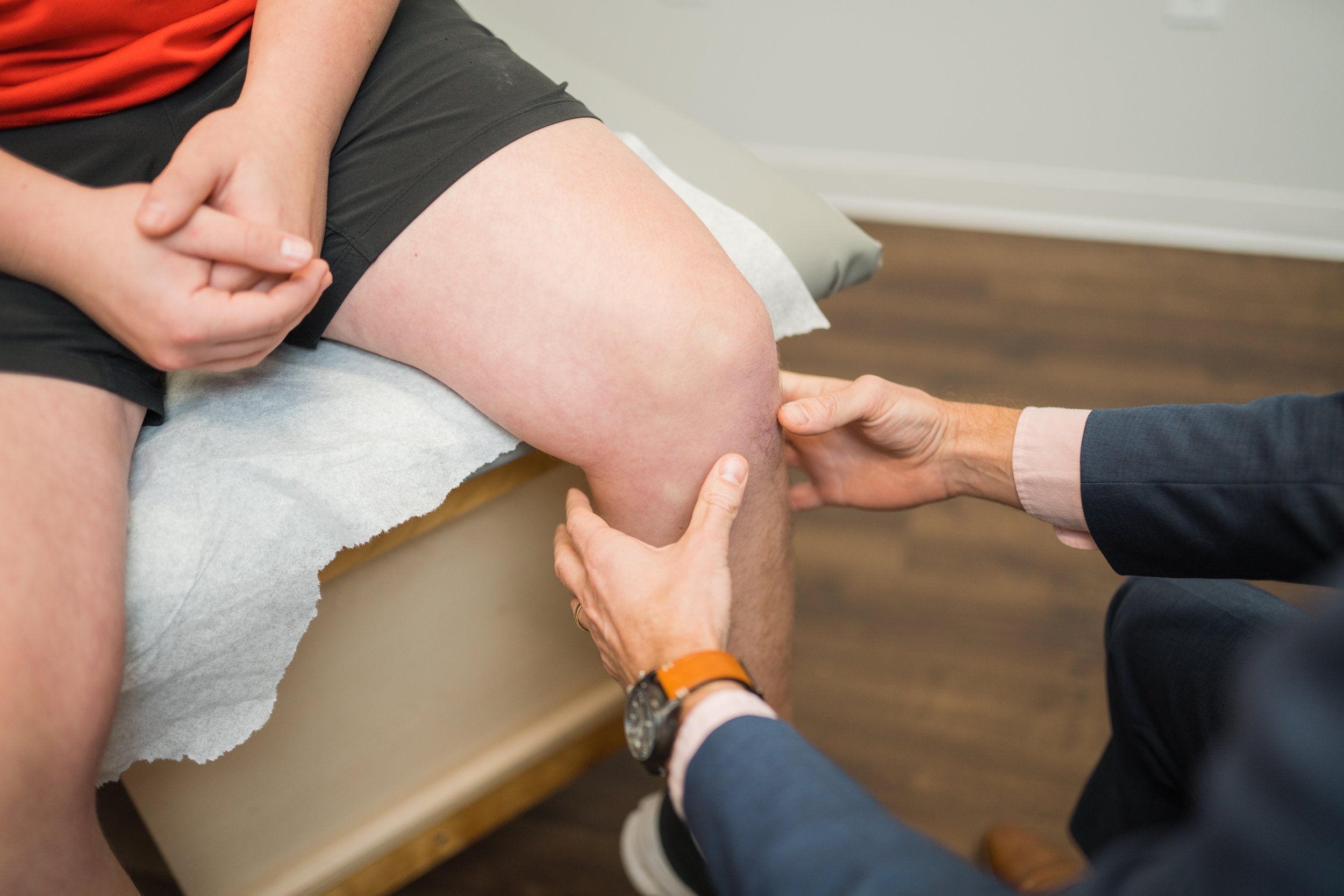
ACL Tear Specialists in San Antonio
Get back into the game, safely & Fast.
What is an ACL Tear?
An ACL (anterior cruciate ligament) tear is an injury to one of the major ligaments in the knee that connects the thigh bone to the shin bone. It is a common injury in athletes, particularly those who play sports that involve sudden stops or changes in direction, such as soccer, football, and basketball. Symptoms of an ACL tear include pain, swelling, and instability in the knee. Treatment options can include physical therapy, bracing, or surgery, depending on the severity of the injury.
How do you know if you have an ACL tear?
A diagnosis of an ACL tear is typically made based on a combination of the patient's symptoms, a physical examination, and imaging tests such as an MRI.
During a physical examination, a healthcare professional may assess the knee's stability and ACL integrity. These tests include the Lachman test, the anterior drawer test, and the pivot shift test.
If an ACL tear is suspected, an MRI will be ordered to confirm the diagnosis and evaluate the extent of the injury.
It is important to note that not all ACL tears are the same, some may be partial, and others may be complete tears. Thus, a proper diagnosis and evaluation are needed to determine the best course of treatment.
Symptoms of an ACL tear include:
Pain, usually located in the center or back of the knee.
Swelling, which can occur within hours of the injury.
A feeling of instability or "giving way" in the knee.
A popping or snapping sound at the time of the injury.
Difficulty bearing weight on the affected leg.
Experiencing pain or think you may have an ACL tear? Let’s get in touch!
Who is more susceptible to getting an acl tear?
Athletes who participate in sports that involve sudden stops, changes in direction, or jumping, such as soccer, football, basketball, and skiing, are at a higher risk of ACL tears.
Females are at a higher risk of ACL tears than males, particularly in sports that involve cutting or pivoting maneuvers. This may be due to differences in muscle strength, neuromuscular control, and hormonal influences.
People with certain risk factors such as ligament laxity, poor knee control, and muscle imbalances, are more likely to tear their ACL.
People who have had a previous ACL injury are at a higher risk of re-injuring their ACL or tearing the ACL in the opposite knee.
People who are overweight or obese are more susceptible to ACL tears as the extra weight can put extra stress on the knee joint.
In addition, even if a person is a higher-risk group, preventive measures such as knee-strengthening exercises can help reduce ACL tears.
What Happens If you retear your acl?
Dr. Marx addresses a notable concern as individuals who previously underwent ACL reconstruction are now experiencing retears 5-10 years post-surgery. Termed as revision ACL surgery, Dr. Marx delves into the complexities of this issue, emphasizing the careful considerations required, including the selection of an appropriate graft and thorough evaluation of bone quality and existing tunnels.
This video underscores the importance of Sports Medicine Fellowship Training, highlighting how it equips practitioners, like Dr. Marx, with the expertise needed to navigate these intricate procedures successfully. With meticulous attention to detail, Dr. Marx emphasizes the importance of achieving a successful outcome in revision ACL surgeries to minimize the risk of subsequent retears and contribute to enhanced long-term patient outcomes.
